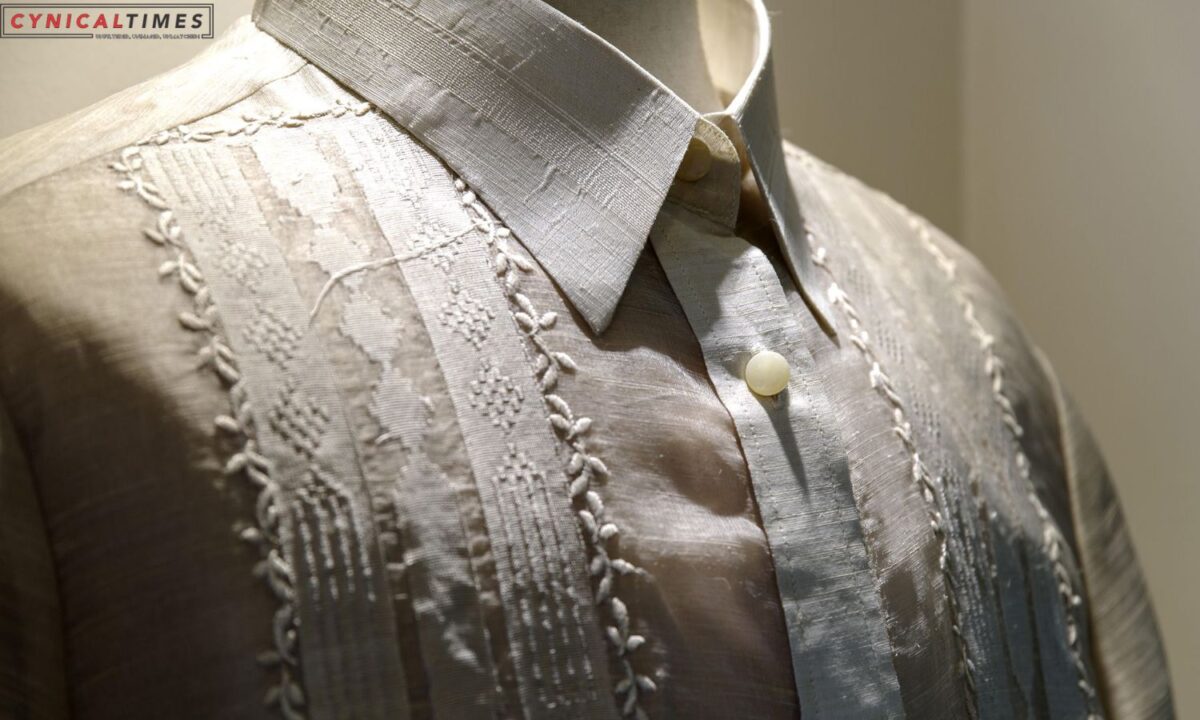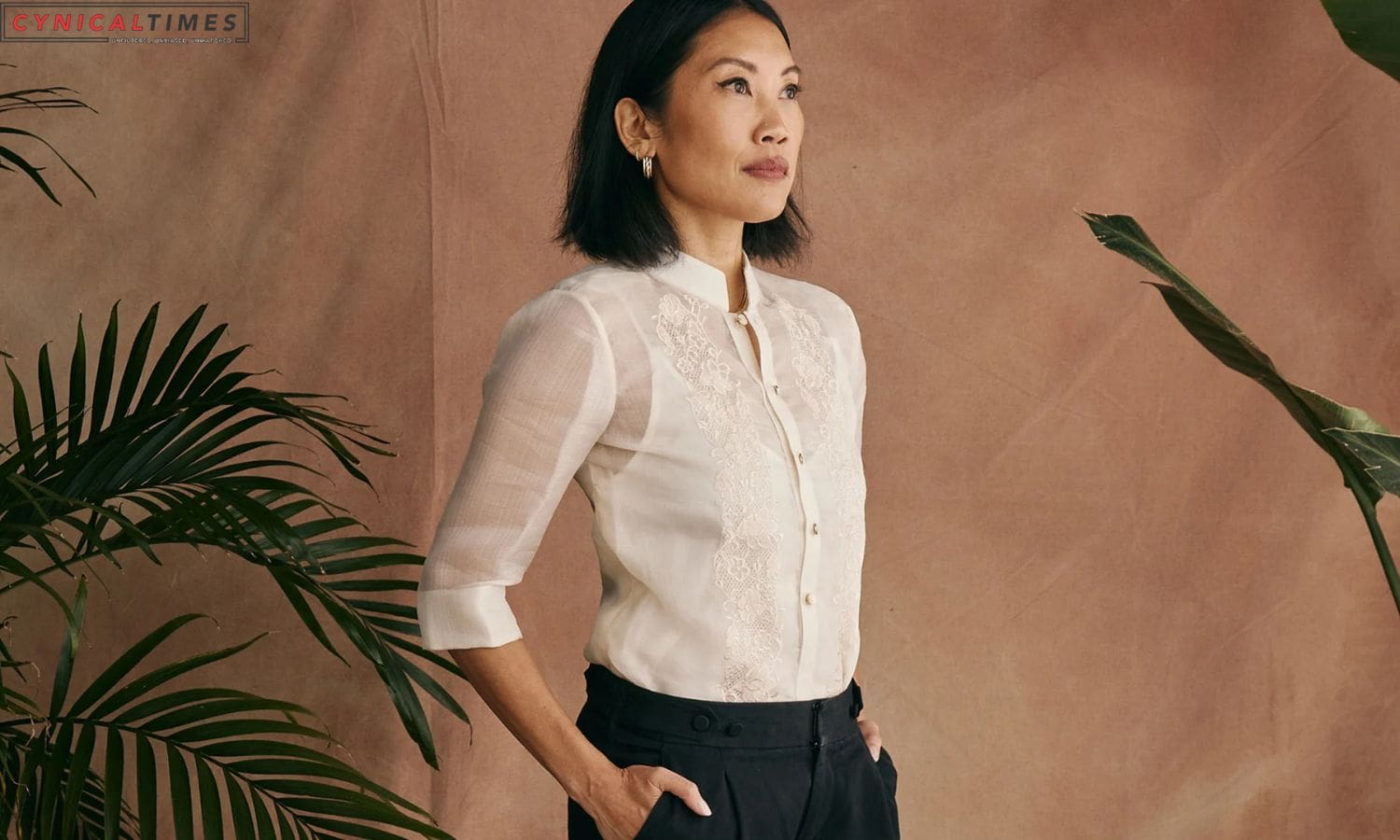Barong Tagalog: In a nation known for its melting pot of cultures, I, a first-generation child of Filipino American immigrants, was raised on a steady diet of stories. My parents spun vivid tales of their homeland, each brimming with intricate details and nostalgia for the childhoods they spent in a land that, to me, seemed as remote as the fantastical worlds described in fairytales. These narratives carried a unique cadence, one that held both a longing to seize opportunities in the Western world and a yearning for a life where they wouldn’t perpetually feel like outsiders, where the daily yoke of conformity to American culture wouldn’t weigh them down.
A significant portion of these stories revolved around my paternal great uncle, the legendary Philippine President Ramon Magsaysay. His legacy is closely intertwined with the barong Tagalog, a sheer, button-down shirt adorned with intricate hand-stitched embroidery. Under his stewardship, the barong Tagalog was officially recognized as the country’s formal attire, an emblem of Filipino heritage and identity.
In recent years, the barong Tagalog, often shortened to just “barong,” has experienced a resurgence in popularity among Filipinos worldwide. It has become a symbol of national pride and a fashion statement cherished by the Filipino diaspora.
“The barong is inherently glamorous,” says wardrobe stylist and fashion editor Rap Sarmiento. “Its sheer fabric and exquisite embroidery make it a standout piece. Second-generation individuals are embracing this classic.”


The origins of the barong can be traced back to a time before the Philippines fell under Spanish colonial rule in the 15th century. It served both as a status symbol and everyday attire. Its sheer fabric is attributed to practicality, designed to combat the sweltering heat and humidity of the Philippines, or perhaps as a product of oppression, with Spanish colonizers ensuring that Filipino natives could not hide items or weapons beneath their clothing.
“The Spanish introduced the barong to all their colonies, and each country adapted it in their unique way,” explains Caroline Mangosing, founder and designer of Vinta Gallery, a Canadian brand specializing in Filipino clothing. “Cuba has its guayabera with pockets, the Dominican Republic has its own pleated version.”
During his inauguration in 1953, President Magsaysay wore a barong to express solidarity with the common Filipino. This marked the widespread acceptance of the barong as the Philippines’ response to a formal suit or tuxedo, setting it apart from Western suits and ties on the global stage. His embrace of the barong symbolized a move towards Philippine independence and resilience in the aftermath of almost 50 years of U.S. colonization.


The barong’s evolution in the years following Magsaysay’s presidency is as captivating as its intricate history. President Ferdinand Marcos’ association with the garment caused it to lose favor among many Filipinos over time. The political context created a lingering distaste, as people didn’t wish to be associated with the regime.
“There was a political hangover. People didn’t want to emulate them,” notes Mangosing, referring to Marcos and his wife Imelda, who favored traditional Filipiniana dresses. As a result, the fashion fell out of favor. “After that, I feel like everyone stopped wearing barongs for a while, and only mass-market versions in flashy colors remained.”
However, in recent years, Filipinos have made substantial strides in fashion, music, and pop culture, both in the United States and around the world. This resurgence has led to a creative, individualistic, and inspiring revival of the barong.
Vinta Gallery’s barongs, handmade and adorned with embroidery in the Philippines, have become one of the brand’s most sought-after items, with prices ranging from $300 to over $1000 for custom versions. Some are even embroidered with anting-anting and other charms inspired by Philippine folk magic.
Last year, Jian DeLeon, men’s fashion and editorial director at Nordstrom, collaborated with menswear label Bode to create a shirt inspired by the traditional barong. DeLeon’s design, made from a unique cotton linen blend fabric, drew inspiration from French designer Pierre Cardin’s reinvention of the shirt silhouette in the 1970s. Cardin introduced elements like a camp collar and French cuffs, embracing a more global style of embroidery. DeLeon believes that such projects can integrate inherently Filipino fashion items into a global context.


Also Read : Pedro Pascal Surprise SNL Appearance: Offering Sage Advice to Bad Bunny
At a Nike “Filipino Forces” event in Los Angeles, stylist Rap Sarmiento sported his father’s barong over a Rhude t-shirt, a black tennis skirt, and Margiela Tabi boots. “It was a way to bring it forward,” says Sarmiento.
Designer and influencer Aleali May also donned a barong with distressed jeans, hoop earrings, and limited-edition Nike Air Force One sneakers at the same event. As the Filipino American presence in music, fashion, and entertainment has grown, so has the prominence of the barong.
Marisa Pizarro, a music executive, recalls her early days in the industry when she was often the sole Filipino at events. Now, it’s common to see several Filipinos at such gatherings, making the barong a fashionable choice. “It’s a sophisticated look without the need for a suit. Suits are rarely seen in creative industries anymore.”
Notable Filipino-American celebrities have embraced the barong, donning it on red carpets and at high-profile events. Last year, Levi’s created a custom denim barong for comedian Jo Koy, merging traditional fabric with the style of a trucker jacket. Photographer Martin Romero, covering the opening night of the Broadway musical “Here Lies Love” for Vogue Philippines, noted that many cast members and guests wore both traditional and modern barongs. The barong has also become increasingly prevalent among Gen Z on social media, with young individuals proudly showcasing brands like Vinta Gallery and The Mestizo on their Instagram and TikTok profiles.
Even NBA players Klay Thompson and Kevon Looney, who aren’t Filipino, sported barongs during their Asia tour as ambassadors for athletic brand Anta. Thompson described the experience as “wonderful” and said the barong felt great, earning it the tag of a “Pinoy Pride moment” by Esquire Philippines.
In recent years, social media and an increased awareness of Filipino culture have contributed to the barong’s resurgence, with a younger generation donning it with pride and creative flair.
The barong Tagalog, with its rich history and evolving style, is not just a piece of clothing. It’s a symbol of Filipino heritage and a celebration of cultural diversity in the modern world.

